
Rabbit Anti-Elastin antibody
alpha Elastin/Tropoelastin; Elastin isoform a; ELN; ELN_HUMAN; elastin isoform m precursor; FLJ38671; FLJ43523; Supravalvular aortic stenosis; Tropoelastin; Williams Beuren syndrome; Williams syndrome region; ADCL1; SVAS; WBS; WS; ELN_BOVIN.
View History [Clear]
Details
Product Name Elastin Chinese Name 弹性蛋白抗体 Alias alpha Elastin/Tropoelastin; Elastin isoform a; ELN; ELN_HUMAN; elastin isoform m precursor; FLJ38671; FLJ43523; Supravalvular aortic stenosis; Tropoelastin; Williams Beuren syndrome; Williams syndrome region; ADCL1; SVAS; WBS; WS; ELN_BOVIN. literatures Research Area Neurobiology Signal transduction Cell adhesion molecule Extracellular matrix Immunogen Species Rabbit Clonality Polyclonal React Species Human, Mouse, Rat, (predicted: Dog, Pig, Cow, ) Applications WB=1:500-2000 ELISA=1:5000-10000 IHC-P=1:100-500 IHC-F=1:100-500 IF=1:100-500 (Paraffin sections need antigen repair)
not yet tested in other applications.
optimal dilutions/concentrations should be determined by the end user.Theoretical molecular weight 80kDa Cellular localization Extracellular matrix Secretory protein Form Liquid Concentration 1mg/ml immunogen KLH conjugated synthetic peptide derived from human Elastin: 101-200/786 Lsotype IgG Purification affinity purified by Protein A Buffer Solution 0.01M TBS(pH7.4) with 1% BSA, 0.03% Proclin300 and 50% Glycerol. Storage Shipped at 4℃. Store at -20 °C for one year. Avoid repeated freeze/thaw cycles. Attention This product as supplied is intended for research use only, not for use in human, therapeutic or diagnostic applications. PubMed PubMed Product Detail Elastic fibers, which are comprised primarily of elastin, endow loose connective tissue with a resilience that compliments the tensile strength of collagenous fibers. Elastin is the main component of the extracellular matrix of arteries, and it performs a regulatory function during arterial development by controlling proliferation of smooth muscle and stabilizing arterial structure. Elastin is composed largely of glycine, proline, and other hydrophobic residues, and it contains multiple lysine-derived crosslinks, such as desmosines, which link individual polypeptide chains into a rubber-like network. During aging, the elasticity of connective tissue becomes reduced because of the cross-linking of collagenous fibers with elastin. Deficiencies of elastin are associated with multiple disorders, such as supravalvular aortic stenosis and Williams-Beuren syndrome. The human elastin gene maps to chromosome 7q11.23.
Function:
Major structural protein of tissues such as aorta and nuchal ligament, which must expand rapidly and recover completely. Molecular determinant of the late arterial morphogenesis, stabilizing arterial structure by regulating proliferation and organization of vascular smooth muscle.
Subunit:
The polymeric elastin chains are cross-linked together into an extensible 3D network. Forms a ternary complex with BGN and MFAP2. Interacts with MFAP2 via divalent cations (calcium > magnesium > manganese) in a dose-dependent and saturating manner.
Subcellular Location:
Secreted, extracellular space, extracellular matrix. Note=Extracellular matrix of elastic fibers.
Post-translational modifications:
Elastin is formed through the cross-linking of its soluble precursor tropoelastin. Cross-linking is initiated through the action of lysyl oxidase on exposed lysines to form allysine. Subsequent spontaneous condensation reactions with other allysine or unmodified lysine residues result in various bi-, tri-, and tetrafunctional cross-links. The most abundant cross-links in mature elastin fibers are lysinonorleucine, allysine aldol, desmosine, and isodesmosine.
Hydroxylation on proline residues within the sequence motif, GXPG, is most likely to be 4-hydroxy as this fits the requirement for 4-hydroxylation in vertebrates.
Similarity:
Belongs to the elastin family.
SWISS:
P04985
Gene ID:
2006
Database links:Entrez Gene: 2006 Human
Omim: 130160 Human
SwissProt: P15502 Human
SwissProt: P54320 Mouse
Unigene: 647061 Human
Unigene: 275320 Mouse
Unigene: 404771 Mouse
Unigene: 54384 Rat
Product Picture
Uterus (Mouse) Lysate at 40 ug
Primary: Anti-Elastin (SL11057R) at 1/1000 dilution
Secondary: IRDye800CW Goat Anti-Rabbit IgG at 1/20000 dilution
Predicted band size: 80 kD
Observed band size: 80 kD
Sample:
Lung (Mouse) Lysate at 40 ug
Primary: Anti-Elastin (SL11057R) at 1/1000 dilution
Secondary: IRDye800CW Goat Anti-Rabbit IgG at 1/20000 dilution
Predicted band size: 80 kD
Observed band size: 80 kD
Sample:
Lane 1: Lung (Mouse) Lysate at 40 ug
Lane 2: Liver (Mouse) Lysate at 40 ug
Lane 3: Uterus (Rat) Lysate at 40 ug
Lane 4: Liver (Rat) Lysate at 40 ug
Primary: Anti-Elastin (SL11057R) at 1/1000 dilution
Secondary: IRDye800CW Goat Anti-Rabbit IgG at 1/20000 dilution
Predicted band size: 50-80 kD
Observed band size: 75 kD
Tissue/cell: human cervical cancer; 4% Paraformaldehyde-fixed and paraffin-embedded;
Antigen retrieval: citrate buffer ( 0.01M, pH 6.0 ), Boiling bathing for 15min; Block endogenous peroxidase by 3% Hydrogen peroxide for 30min; Blocking buffer (normal goat serum,C-0005) at 37℃ for 20 min;
Incubation: Anti-Elastin Polyclonal Antibody, Unconjugated(SL11057R) 1:200, overnight at 4°C, followed by conjugation to the secondary antibody(SP-0023) and DAB(C-0010) staining
Tissue/cell: mouse stomach wall; 4% Paraformaldehyde-fixed and paraffin-embedded;
Antigen retrieval: citrate buffer ( 0.01M, pH 6.0 ), Boiling bathing for 15min; Block endogenous peroxidase by 3% Hydrogen peroxide for 30min; Blocking buffer (normal goat serum,C-0005) at 37℃ for 20 min;
Incubation: Anti-Elastin Polyclonal Antibody, Unconjugated(SL11057R) 1:200, overnight at 4°C, followed by conjugation to the secondary antibody(SP-0023) and DAB(C-0010) staining
Paraformaldehyde-fixed, paraffin embedded (Rat brain); Antigen retrieval by boiling in sodium citrate buffer (pH6.0) for 15min; Block endogenous peroxidase by 3% hydrogen peroxide for 20 minutes; Blocking buffer (normal goat serum) at 37°C for 30min; Antibody incubation with (Elastin) Polyclonal Antibody, Unconjugated (SL11057R) at 1:500 overnight at 4°C, followed by a conjugated secondary (sp-0023) for 20 minutes and DAB staining.
Bought notes(bought amounts latest0)
No one bought this product
User Comment(Total0User Comment Num)
- No comment
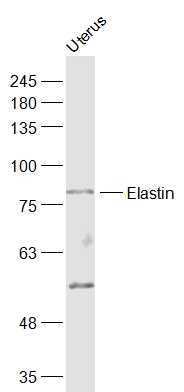
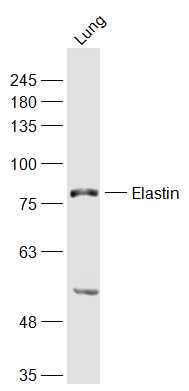
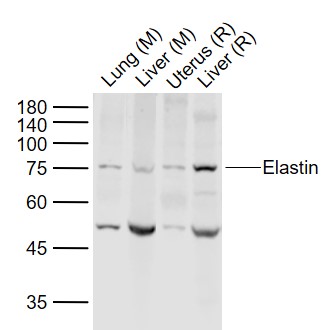
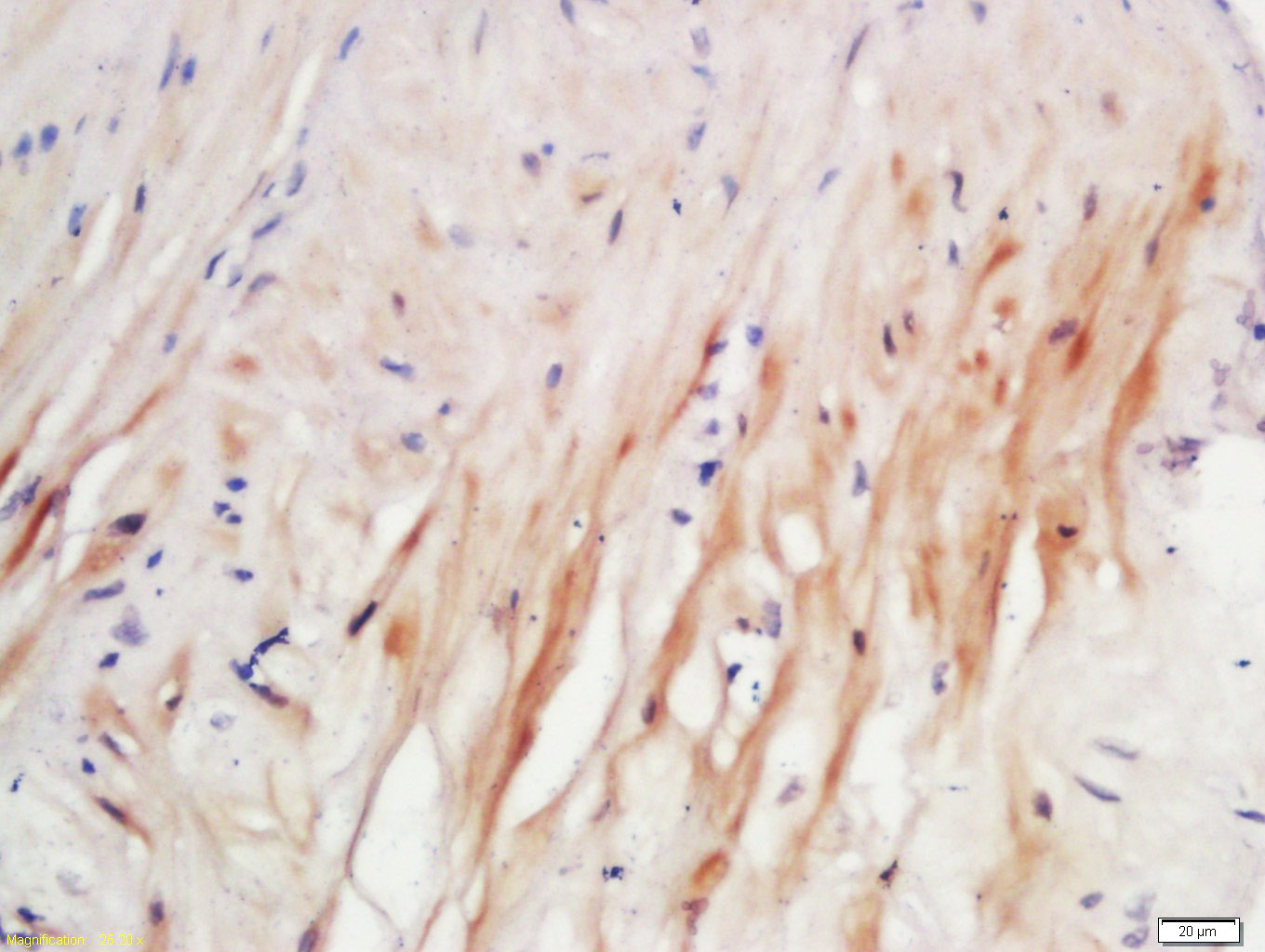
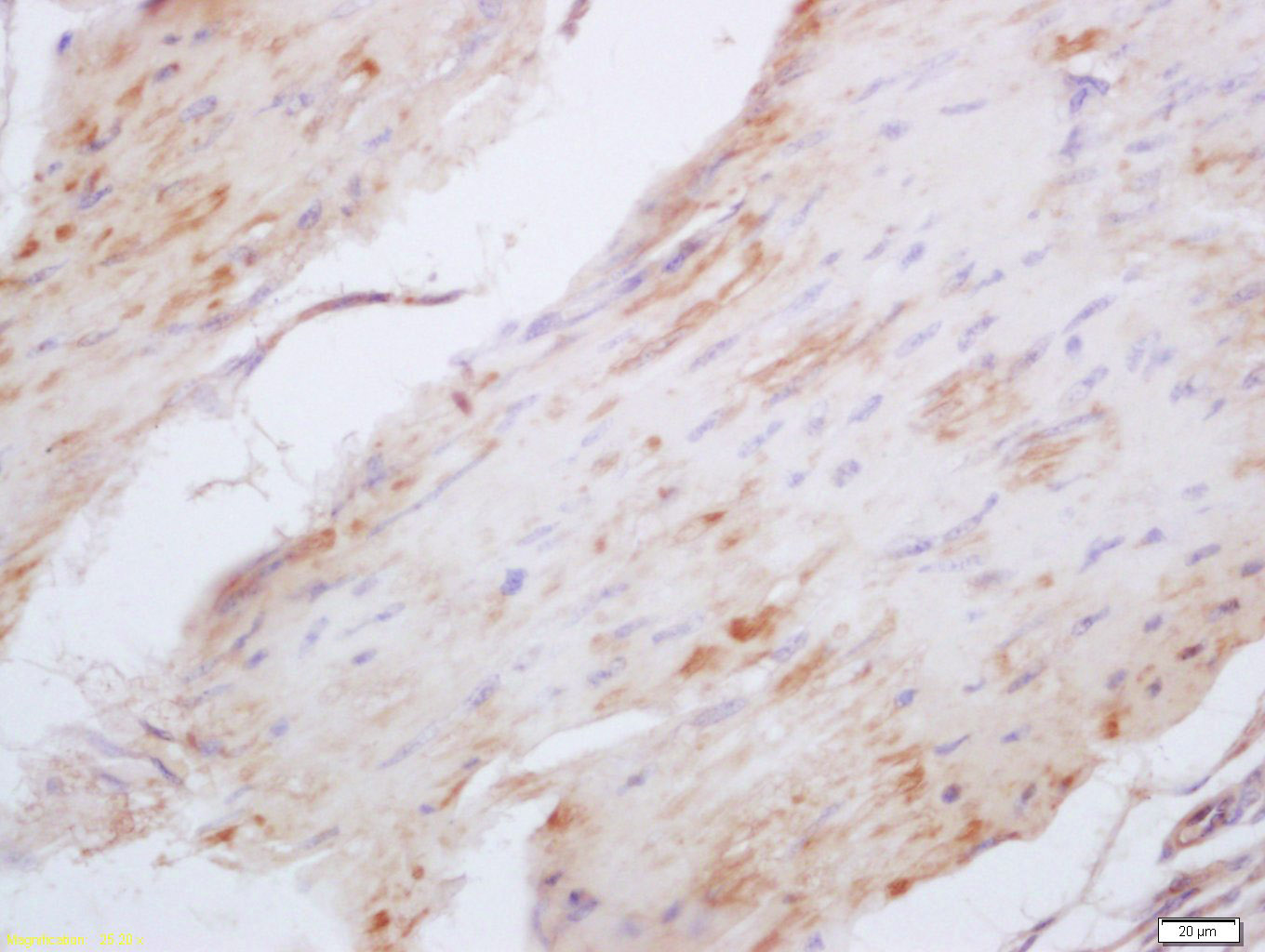
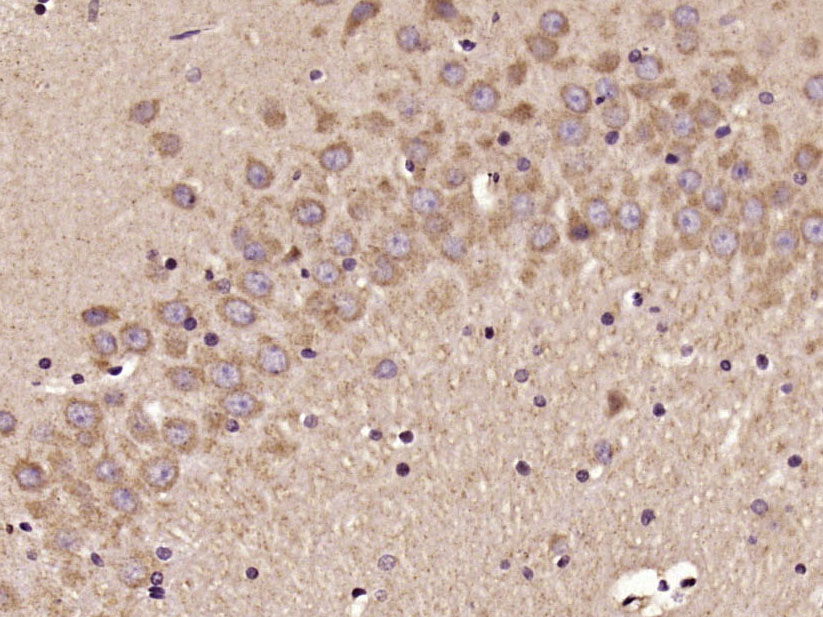


 +86 571 56623320
+86 571 56623320
 +86 18668110335
+86 18668110335

